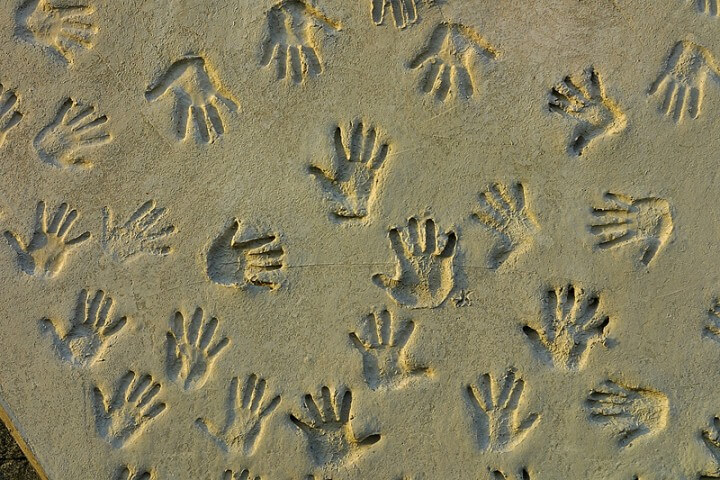 Getting started:
Getting started:
There are a few things that you should be aware of before starting a handprint craft project with your child. In order to get the best possible results when making crafts with paint or clay, you need to keep the following tips in mind:
- Wash your hands – Before attempting to collect a handprint, you will want to make sure that there are no loose particles of food or other debris on your child’s hand. Even something small could distort the finished image. Use soap and water and dry hands thoroughly before starting your handprint craft.
- Prepare child to hold still – A handprint is always better if you can get your child to hold his hand still enough to get a clear print. Avoid doing handprint crafts when your child is unhappy due to a looming nap or mealtime. Unhappy children are usually less willing to cooperate.
- Press firmly – Your craft can turn out very differently depending on how firmly you press a hand against a piece of paper or into a mold to get an impression. It takes more force to get the definition from a clay mold than from an ink or paint print. Press hard enough to make an obvious indent in the clay on all parts of the hand and make sure that all parts of the hand have pressed up against whatever surface you are hoping to transfer the print onto.
- Use child safe materials – As always, when you are working closely with children you do not want to be using any materials that could harm their skin or be harmful if accidentally swallowed. You never know where curious hands will end up and you would never want to endanger the health of your child in order to complete a craft.
Mind your medium:
- Handprint crafts for kids will differ greatly in age appropriateness and difficulty depending on the different mediums or types of materials that you use. For example, with an adult’s help even the youngest of children can participate in making handprint crafts by making ink prints and pressing their little hands into a clay mold. Such handprint crafts are excellent ways to make a baby’s first keepsakes.
- As your little one gets older and more capable of controlling his hands, you can experiment with finger paints and having your kids trace their hands by themselves. When you are sure that your little ones are not going to eat too much of the finger paints, let them create art using their hands. You may not end up with perfect handprints, but you will usually be able to make out a finger print or two.
- When a child is able to cut and paste crafts on his own then only creativity will limit what he is able to do. Cut out handprints can take on a wide variety of different forms. Handprints can be the feathers of a bird, the antlers on a moose or the legs of a spider. With some glue and other simple materials (i.e. felt, paper plates, pipe cleaners, etc.) you can create fun decorations and art projects.
- As a child ages to the point where they are able to operate a computer, scanned digital images can be printed right onto iron-on paper and then adhered to the fabric of your choice. Printers and digital photo papers are readily available. Image can be made to adhere to all kinds of different surfaces. Handprint crafts can take on a much older, cooler form when combined with the manipulative power of computer programs. So you can see that the age of the child and the materials that are available to that child make a big difference when it comes to the types of kid handprint crafts that can be made.

Leave a Reply